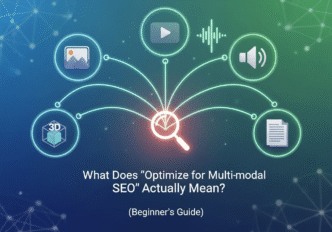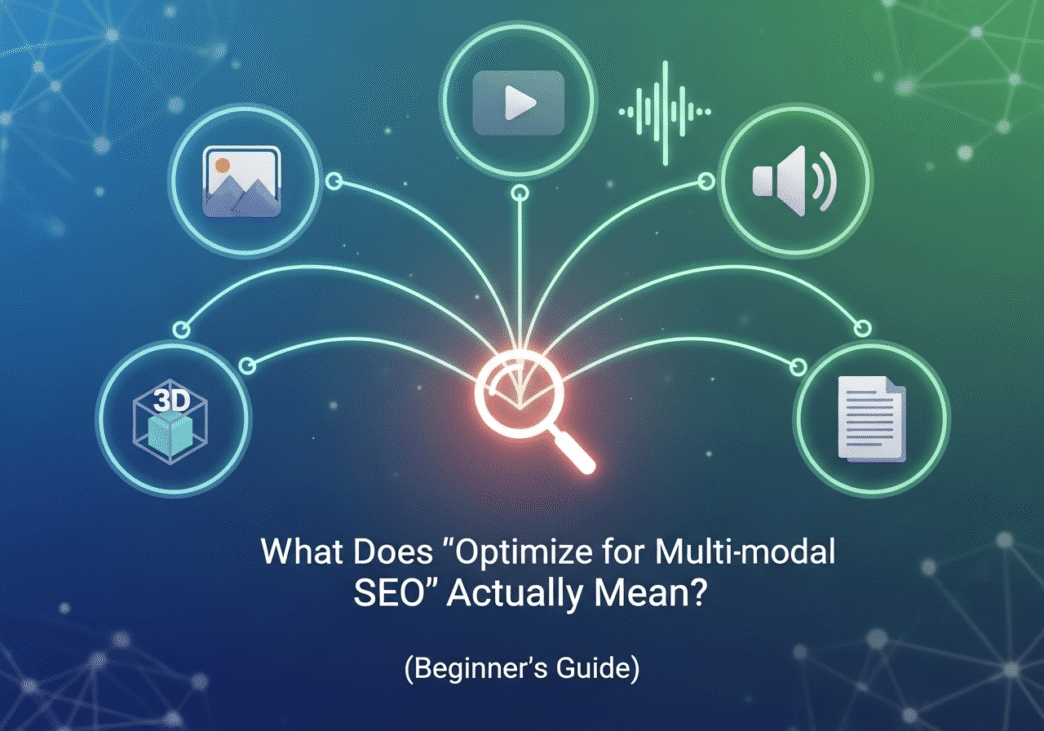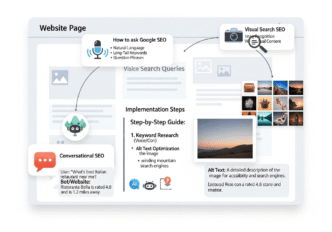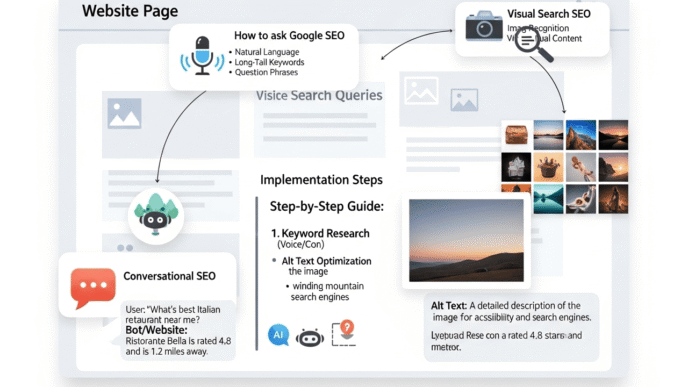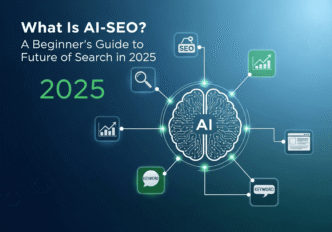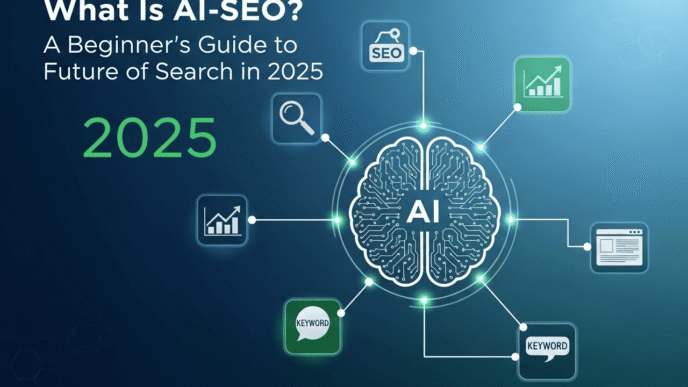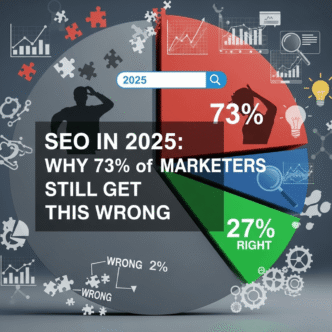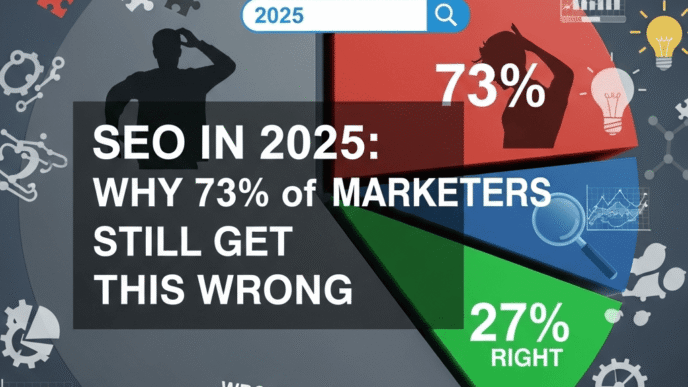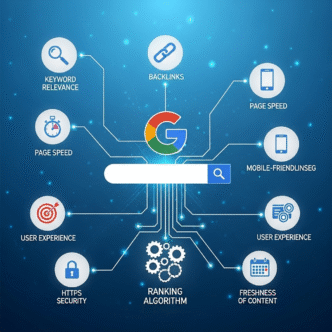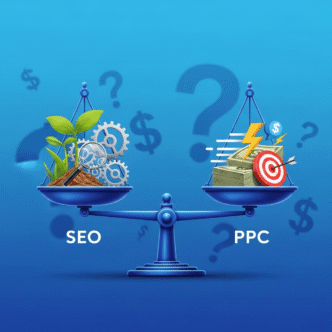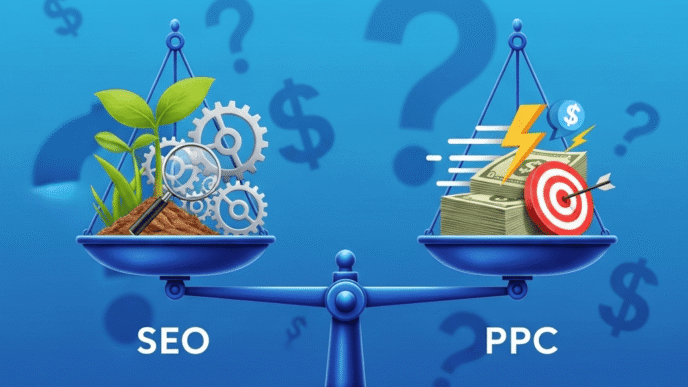Ever felt like you’re playing catch-up with search engines? You’ve just mastered keyword research, and suddenly everyone’s talking about optimizing for Alexa, Google Lens, and ChatGPT. Welcome to the era where Multi-modal SEO Optimization isn’t just a fancy buzzword – it’s your ticket to staying visible in a world where people search by speaking, snapping photos, and chatting with AI.
Here’s the thing: while you’ve been perfecting your traditional SEO game, search behavior has quietly revolutionized. Think about it – when was the last time you typed “weather” instead of asking Siri? Or manually searched for a product instead of using your camera to find it online?
Multi-modal SEO simply means optimizing your content for all the different ways people search today. It’s like being fluent in multiple “search languages” – voice, visual, and conversational AI. And don’t worry, it’s not as complicated as it sounds!
Table of Contents
ToggleWhat Exactly Is Multi-modal SEO? (Breaking Down the Jargon)
Let’s strip away the technical fluff. Multi-modal SEO is preparing your content for three main search behaviors:
Voice Search: When people ask questions out loud to their devices. Think “Hey Google, what’s the best pizza place near me?” instead of typing “pizza restaurant location.”
Visual Search: Using images to find information. Like snapping a photo of those cool sneakers you saw someone wearing and letting Google Lens tell you where to buy them.
Conversational AI Search: Interacting with AI tools like ChatGPT, Claude, or Bard to get detailed, contextual answers.
The beauty? You don’t need to choose one. Smart businesses optimize for all three because that’s how real people actually search today.
Pro Tip: Start thinking like your customers. How do they naturally ask questions? That’s your goldmine for natural language queries.
# How Does Voice Search Optimization Really Work?
Remember when everyone typed “best restaurants NYC”? Now they’re asking, “What are some great restaurants in New York City for a romantic dinner?” See the difference? Voice search optimization is all about matching these conversational patterns.
Here’s what actually works:
Focus on Question-Based Content: People ask complete questions when speaking. Your content should answer them just as naturally.
Target Long-Tail Keywords: Voice searches are typically 3-5 words longer than typed searches. Instead of targeting “pizza delivery,” think “best pizza delivery near me tonight.”
Optimize for Featured Snippets: When someone asks Alexa a question, she often reads from Google’s featured snippets. Getting that coveted “position zero” means you’re literally the voice of the internet.
Expert Insight: According to Google’s research, 58% of consumers use voice search to find local business information, and voice searches are 3x more likely to be local-based. If you’re not optimizing for local voice search, you’re missing out big time.
Step-by-Step Voice Search Optimization Tutorial:
Research Conversational Keywords
- Use tools like AnswerThePublic or simply check Google’s “People Also Ask” section
- Listen to how your customers actually phrase questions during support calls
Create FAQ-Style Content
- Write in a question-and-answer format
- Use the exact phrases people speak, not just type
Implement Schema Markup
- Add schema markup implementation to help search engines understand your content context
- Focus on FAQ schema and How-To schema for voice-friendly formatting
Monitor Performance in Google Search Console
- Track which voice-friendly queries are bringing traffic
- Use Google Search Console to identify new opportunities
- Access detailed insights at Google Search Console
Common Mistake to Avoid: Don’t just stuff keywords into existing content. Rewrite sections to sound natural when spoken aloud.
What’s the Deal with Visual Search SEO?
Picture this: You’re scrolling Instagram, see an amazing lamp, and within seconds you know where to buy it – thanks to visual search. Visual search SEO is about making your images discoverable when people search with photos instead of words.
Here’s what makes visual search tick:
Image Quality Matters: High-resolution, well-lit images perform better. Google’s algorithms are getting scary good at understanding image content.
Alt Text Is Your Best Friend: Write descriptive alt text that explains what’s in the image AND why it matters to your audience.
File Names Count: Instead of “IMG_1234.jpg,” try “red-leather-handbag-vintage-style.jpg.”
Pro Tip: Image SEO techniques aren’t just about the pictures themselves. The surrounding text, captions, and page context all influence how search engines interpret your visuals.
Visual Search Optimization Step-by-Step:
Audit Your Current Images
- Check that all images have descriptive alt text
- Ensure file names are meaningful and keyword-rich
Create Visually Rich Content
- Add infographics, product photos, and behind-the-scenes images
- Include step-by-step visual guides for how-to content
Optimize for Google Lens
- Use clear, high-contrast images
- Include text overlays when relevant (but don’t rely on them entirely)
Leverage Pinterest and Instagram
- These platforms are visual search goldmines
- Use relevant hashtags and detailed descriptions
Expert Insight: Visual searches are growing 30% year-over-year according to Pinterest’s latest data, with 600 million visual searches happening monthly. The businesses that nail visual search SEO now will dominate their niches tomorrow.
How Do You Optimize for Conversational AI Like ChatGPT?
This is where things get interesting. Conversational AI optimization isn’t about gaming the system – it’s about creating genuinely helpful, comprehensive content that AI tools love to reference.
Think of AI as the ultimate research assistant. When someone asks ChatGPT about your industry, you want your content to be the source it pulls from and recommends.
What Works for AI Optimization:
Comprehensive Topic Coverage: Don’t just scratch the surface. Cover topics thoroughly, anticipating follow-up questions.
Clear Structure: Use headers, bullet points, and logical flow. AI tools excel at parsing well-organized content.
Authoritative Sources: Link to reputable sources and cite your claims. AI-powered search tools prioritize trustworthy information.
Current Information: Keep your content updated. AI tools often prefer recent, relevant information over outdated content.
ChatGPT Optimization Tutorial:
Create Topic Clusters
- Build comprehensive resource hubs around your main topics
- Link related content internally to show topic authority
Write Like You’re Teaching
- Use clear explanations and practical examples
- Break complex concepts into digestible chunks
Include Data and Statistics
- AI tools love concrete information they can reference
- Always cite your sources properly
**Optimize for Featured Snippets Optimization
- Write concise, direct answers to common questions
- Use numbered lists and bullet points for easy parsing
Common Pitfall: Don’t keyword stuff for AI. Focus on natural, helpful content that genuinely answers user questions.
Quick Start Checklist for Multi-modal SEO Success
Ready to dive in? Here’s your actionable roadmap:
Week 1: Foundation Setup
- [ ] Audit your current content for voice-friendly FAQ sections
- [ ] Review all images for proper alt text and descriptive file names
- [ ] Set up Google Search Console tracking for new search queries
- [ ] Identify your top 10 conversational keywords
Week 2: Content Optimization
- [ ] Rewrite key pages to include natural, conversational language
- [ ] Add schema markup implementation to important pages
- [ ] Create at least one comprehensive, AI-friendly resource guide
- [ ] Optimize your Google My Business listing for local voice search
Week 3: Performance Monitoring
- [ ] Use SEO analytics tools to track voice search performance
- [ ] Monitor visual search traffic through Google Analytics
- [ ] Test your content by asking voice assistants about your topics
- [ ] Create a monthly reporting system for multi-modal metrics
Pro Tip: Don’t try to optimize everything at once. Pick one area (voice, visual, or conversational AI) and master it before moving to the next.
Frequently Asked Questions About Multi-modal SEO
Q: Is multi-modal SEO replacing traditional SEO? A: Not at all! Think of it as an expansion pack for your existing SEO tutorial for beginners knowledge. Traditional SEO fundamentals still matter – you’re just adding new dimensions.
Q: How do I measure multi-modal SEO success? A: Track voice search queries in Google Search Console, monitor visual search traffic, and watch for increases in long-tail, conversational keywords. Mobile-first indexing metrics are also crucial since most multi-modal searches happen on mobile.
Q: Which businesses benefit most from multi-modal SEO? A: Local businesses see huge wins from voice search optimization. E-commerce sites crush it with visual search. Service-based businesses excel with conversational AI optimization. Really, if you have customers, you need this.
Q: How long does it take to see results? A: Voice search improvements can show up within 4-6 weeks. Visual search optimization takes 2-3 months. Conversational AI benefits build over time as your content authority grows. According to Moz’s case studies, businesses see an average 35% increase in organic traffic within 6 months of implementing multi-modal strategies.
Common Mistakes That Kill Multi-modal SEO Results
Mistake #1: Ignoring User Intent Just because someone uses voice search doesn’t mean they want the same results as a text search. Voice users often want immediate, actionable answers.
Mistake #2: Over-Optimizing for One Mode Don’t sacrifice your visual search optimization just to rank better for voice. Balance is key.
**Mistake #3: Forgetting About Mobile-First Indexing Most multi-modal searches happen on mobile. If your site isn’t mobile-optimized, you’re dead in the water.
Mistake #4: Neglecting Future of Search Marketing Trends Search behavior evolves quickly. What works today might need tweaking tomorrow. Stay curious and keep testing.
Your Next Steps: Making Multi-modal SEO Work for You
Here’s the truth: Multi-modal SEO isn’t going anywhere. It’s not a trend – it’s the new reality of how people find information online.
Start small. Pick one area that makes the most sense for your business. If you’re local, focus on voice search optimization. If you sell products, nail your visual search SEO. If you’re in a complex industry, master conversational AI optimization.
The businesses winning online today aren’t just optimizing for search engines – they’re optimizing for how real humans actually search. And that, my friend, is the secret sauce.
Remember: you don’t need to be perfect from day one. Every small improvement in your multi-modal approach puts you ahead of competitors who are still stuck in 2019.
Ready to start your multi-modal SEO journey? Take action today – audit one piece of your content for voice-friendly language, optimize three images with better alt text, or create one comprehensive FAQ section. Small steps compound into massive results.
Share this guide with your team, bookmark it for reference, and most importantly – start implementing! Drop a comment below about which multi-modal strategy you’ll tackle first. Your future self (and your search rankings) will thank you.
Want more actionable SEO insights? Subscribe to our newsletter for weekly tips on mastering the future of search marketing. Because in SEO, the only constant is change – and the winners are those who adapt fastest.
Related posts:
- How to Implement Multi-Modal SEO on Your Website Pages: Complete Step-by-Step Guide
- The SEO Lie: Why Following SEO Best Practices Won’t Get You Ranked
- SEO Basics: Your Ultimate Guide to Search Engine Optimization in 2025 (Visual guide)
- Voice Search Optimization: Rank for “Near Me” Searches in 2025 (visual guide)

